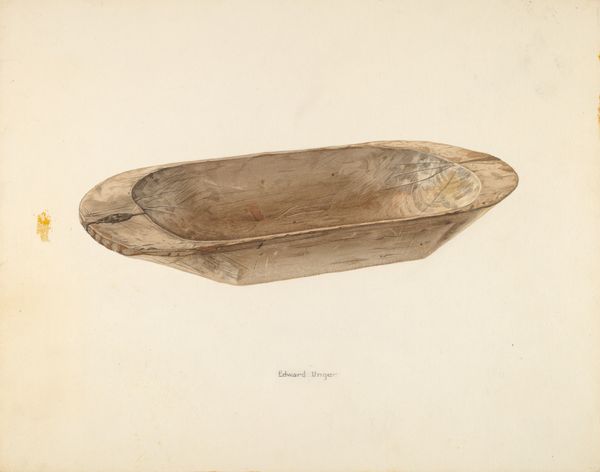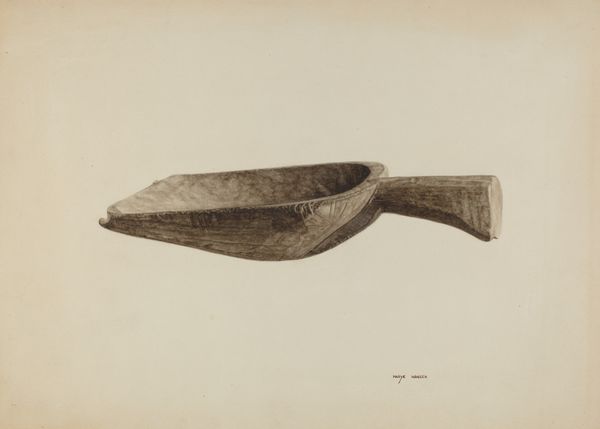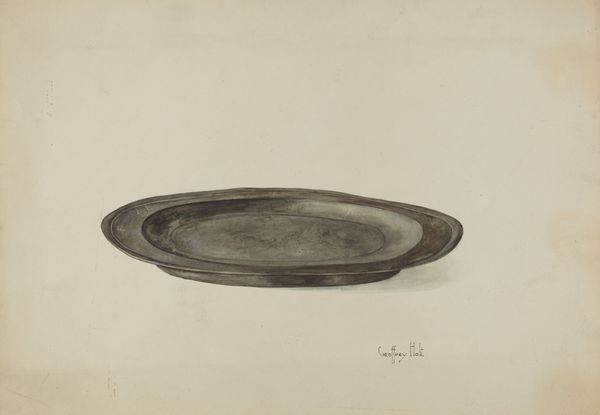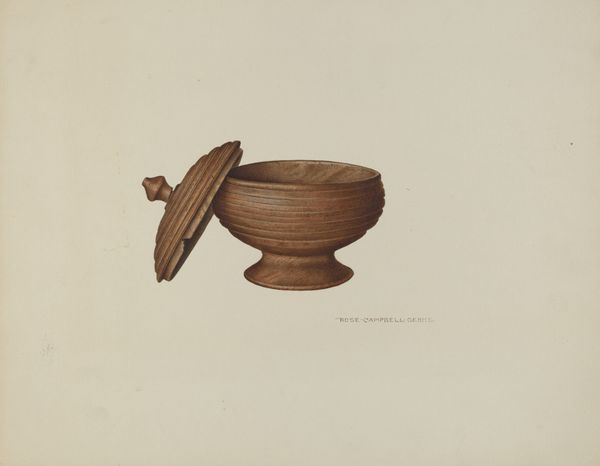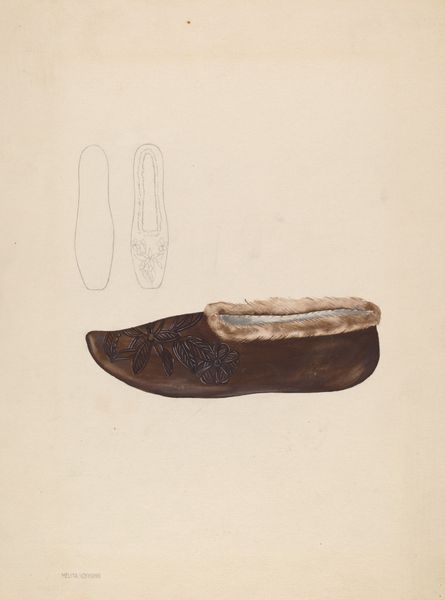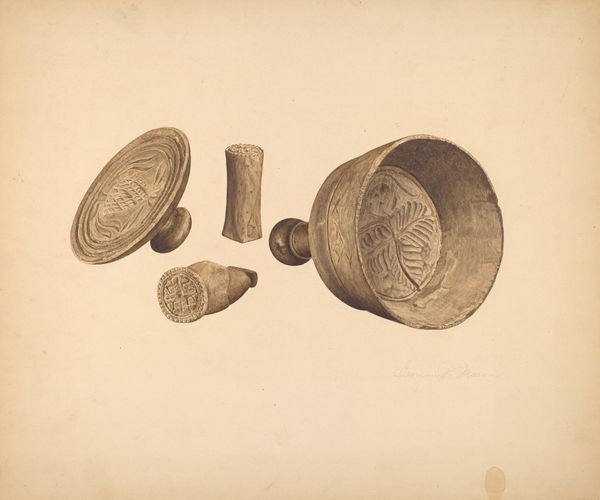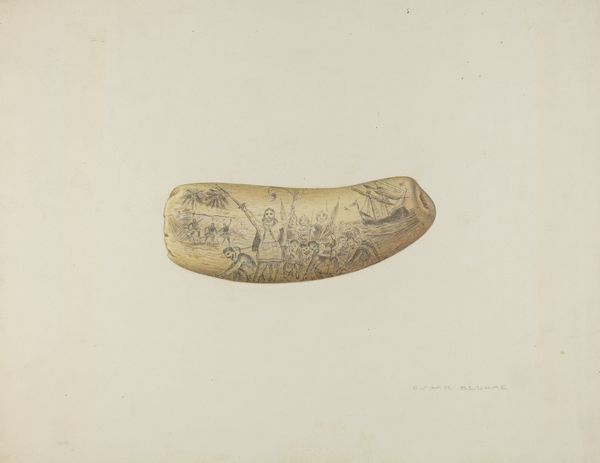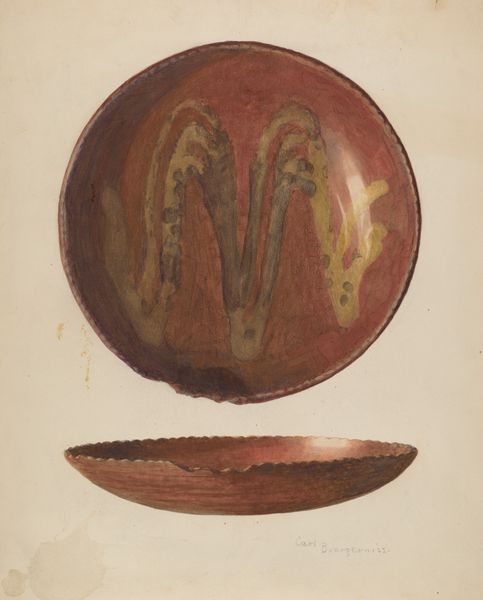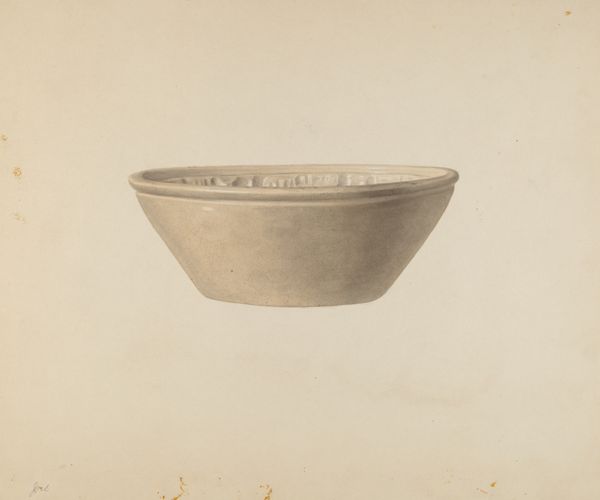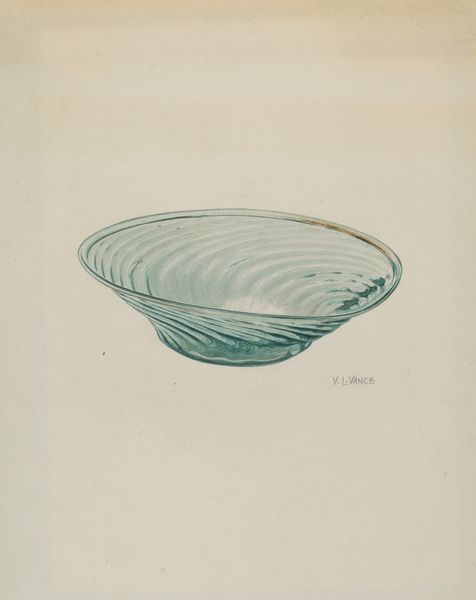
drawing, paper, pencil
#
drawing
#
paper
#
pencil
#
realism
Dimensions: overall: 26.6 x 35.7 cm (10 1/2 x 14 1/16 in.) Original IAD Object: 20 1/2" long at top edge; 11 1/2" long at bottom; 3 1/4" high
Copyright: National Gallery of Art: CC0 1.0
Curator: I’m immediately drawn to the rough-hewn texture of the bowl; there's something so satisfying about its simplicity. Editor: Indeed. Here we have "Bread Dough Bowl," a pencil drawing on paper by Mary Hansen, dating from around 1939. What strikes me is its seemingly mundane subject elevated to a piece worthy of artistic representation. Curator: I think that elevation is precisely what fascinates me. It invites us to consider the bowl not just as an object, but as a testament to the labor and processes inherent in bread-making itself. Look at how Hansen captures the wood grain; it speaks to the handcraft involved in its creation, possibly even by the artist. Editor: And in doing so, reflects the societal and economic climate of the 1930s, a time when such handcrafted items were more common, before mass production took over. One can also examine the significance of "bread" itself; often it symbolizes community and sharing. Displaying the object of the activity is another political way to communicate those ideologies. Curator: Precisely. By emphasizing the bowl's texture and form, the artist directs our focus to the very act of creation. It prompts a deep reflection on material culture and how art intertwines with the routines and skills we've discarded. The pencil marks mimic the grooves in the wood, it looks almost three-dimensional! Editor: Which raises questions about artistic intentionality. Was Hansen seeking to document a fading way of life? To celebrate a utilitarian object's inherent beauty? Was she part of a larger Arts and Crafts movement striving for authenticity in a rapidly industrializing world? The context around art really shapes how it can be interpretted. Curator: Perhaps it was an acknowledgement of everyday life at home. Thinking about the material properties and its construction, I notice what is not in the drawing. It speaks to consumption habits, too; that of self-sufficiency rather than purchase. Editor: It's amazing how much this simple image of an object of functionality opens the door for so much dialog! Curator: It really shows the deep ties art has to production and its social role. Editor: A perspective shift opens possibilities!
Comments
No comments
Be the first to comment and join the conversation on the ultimate creative platform.
